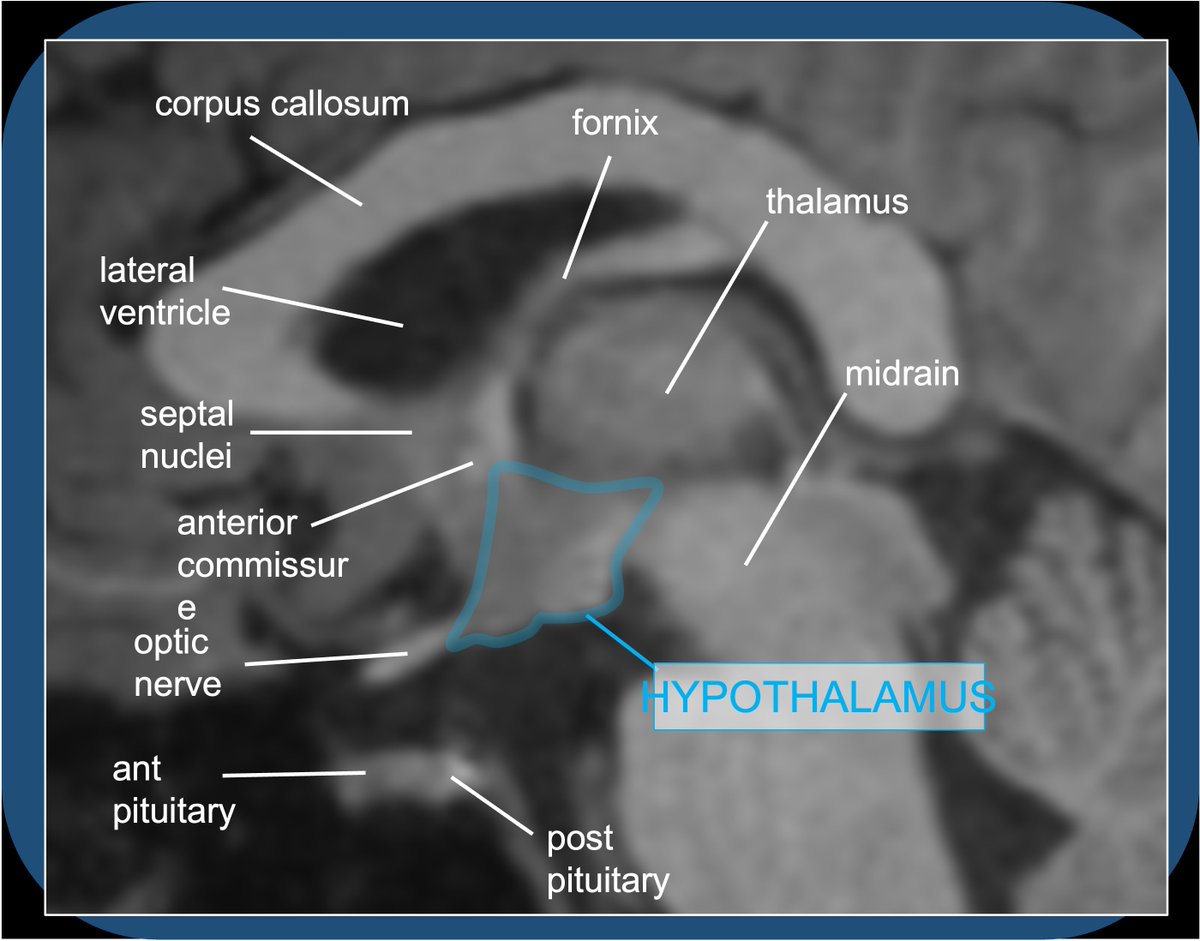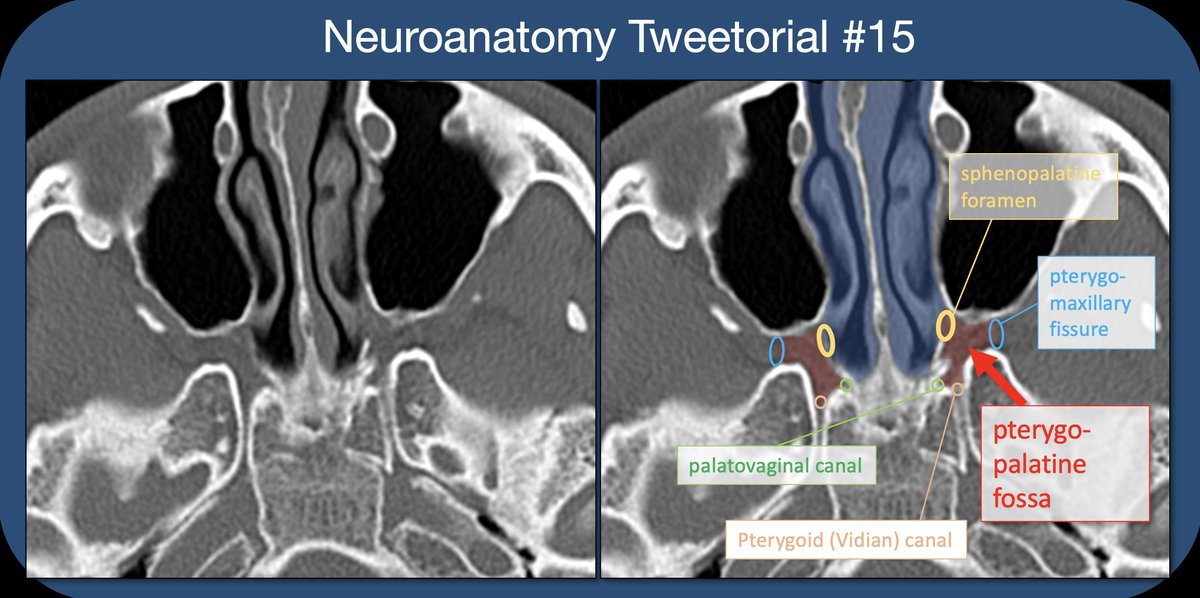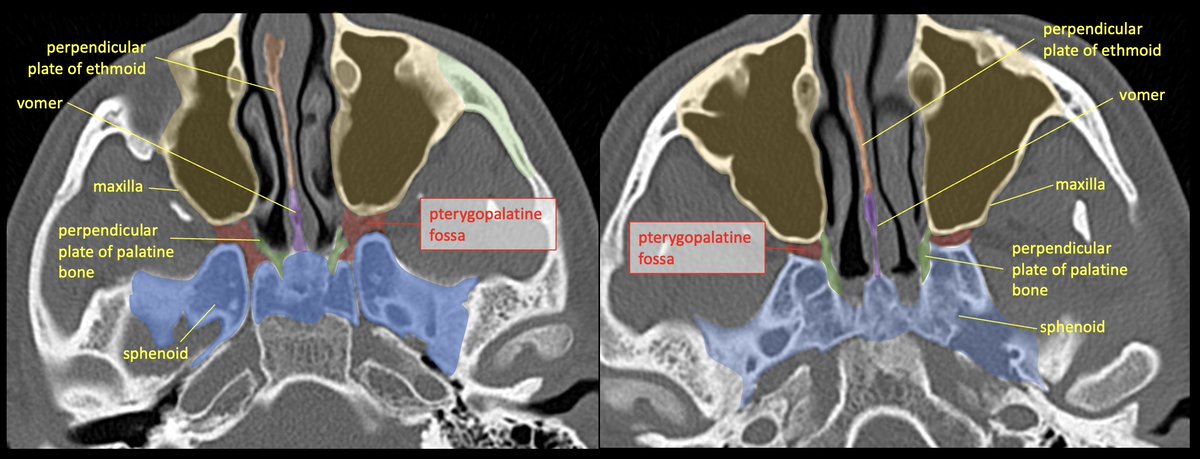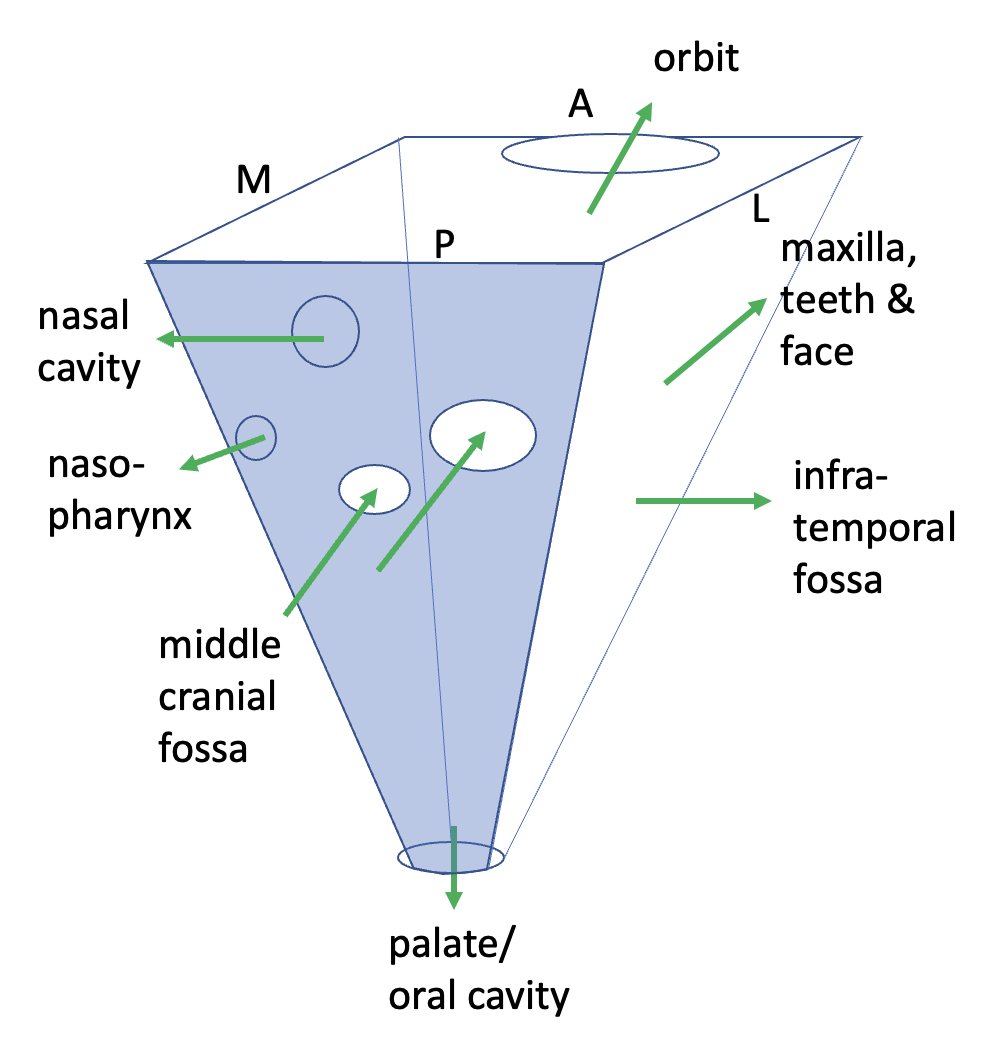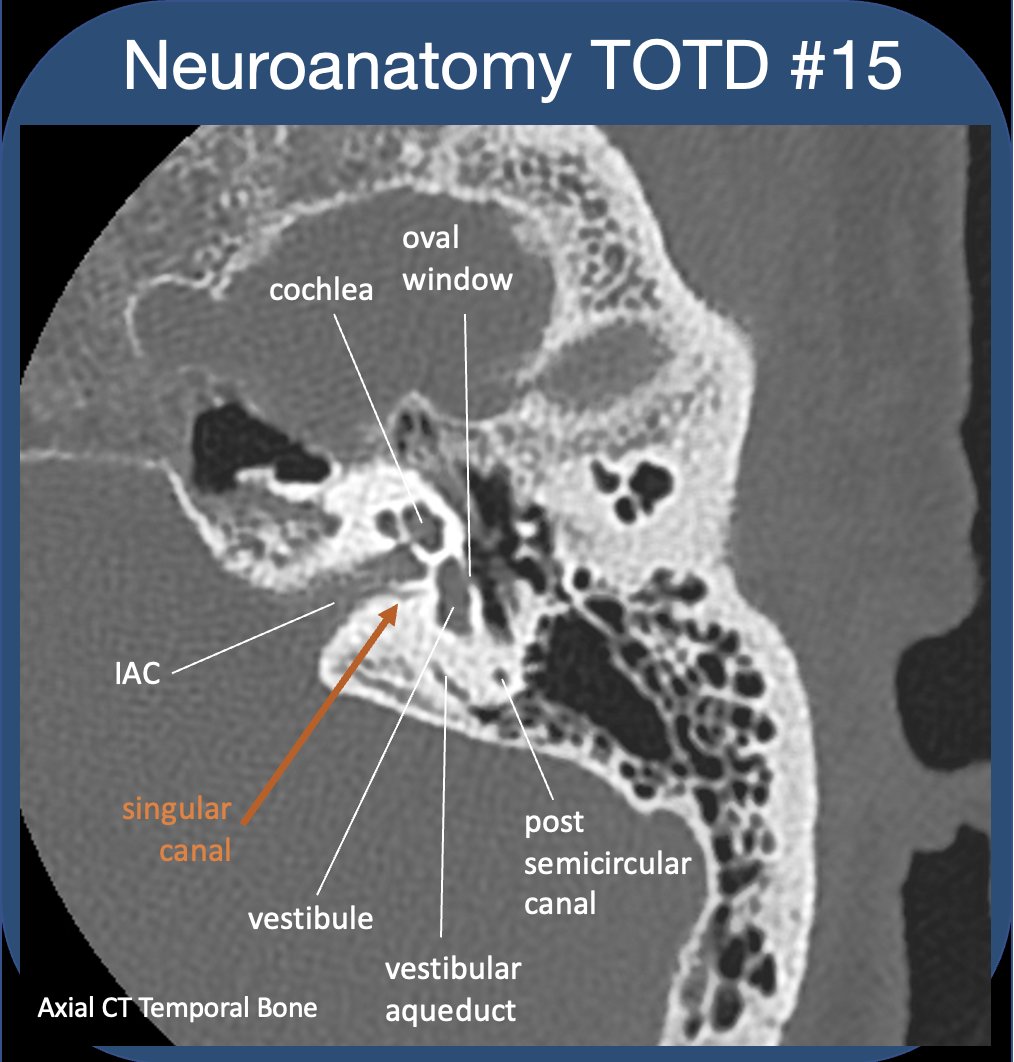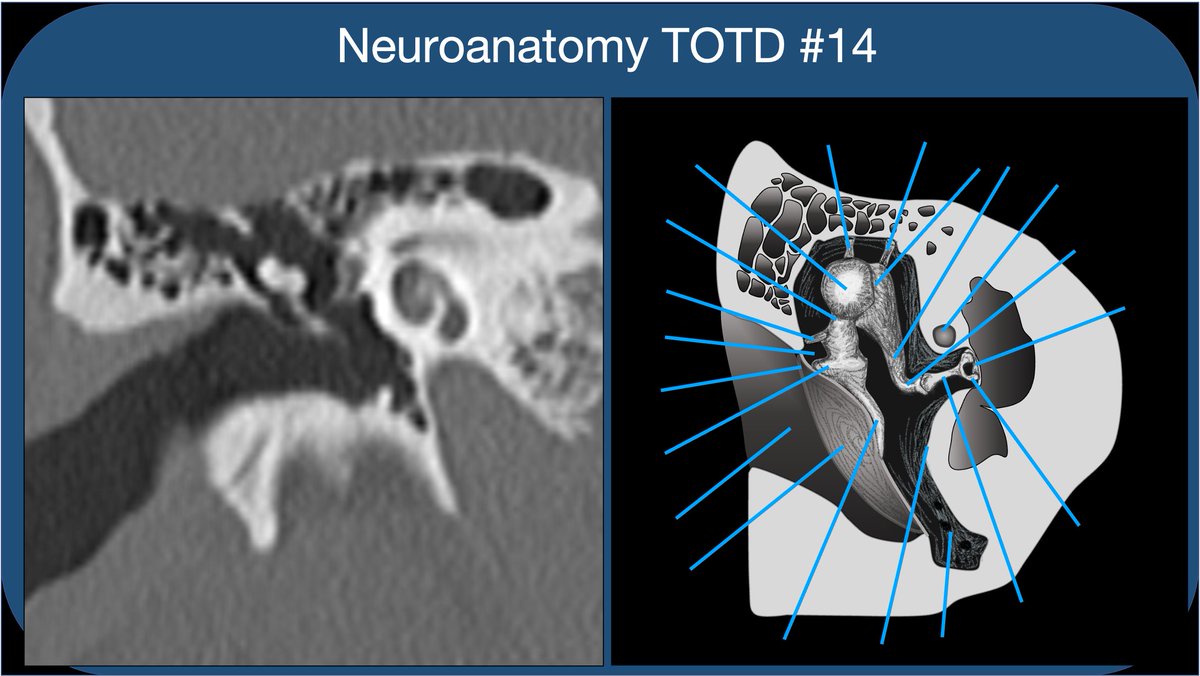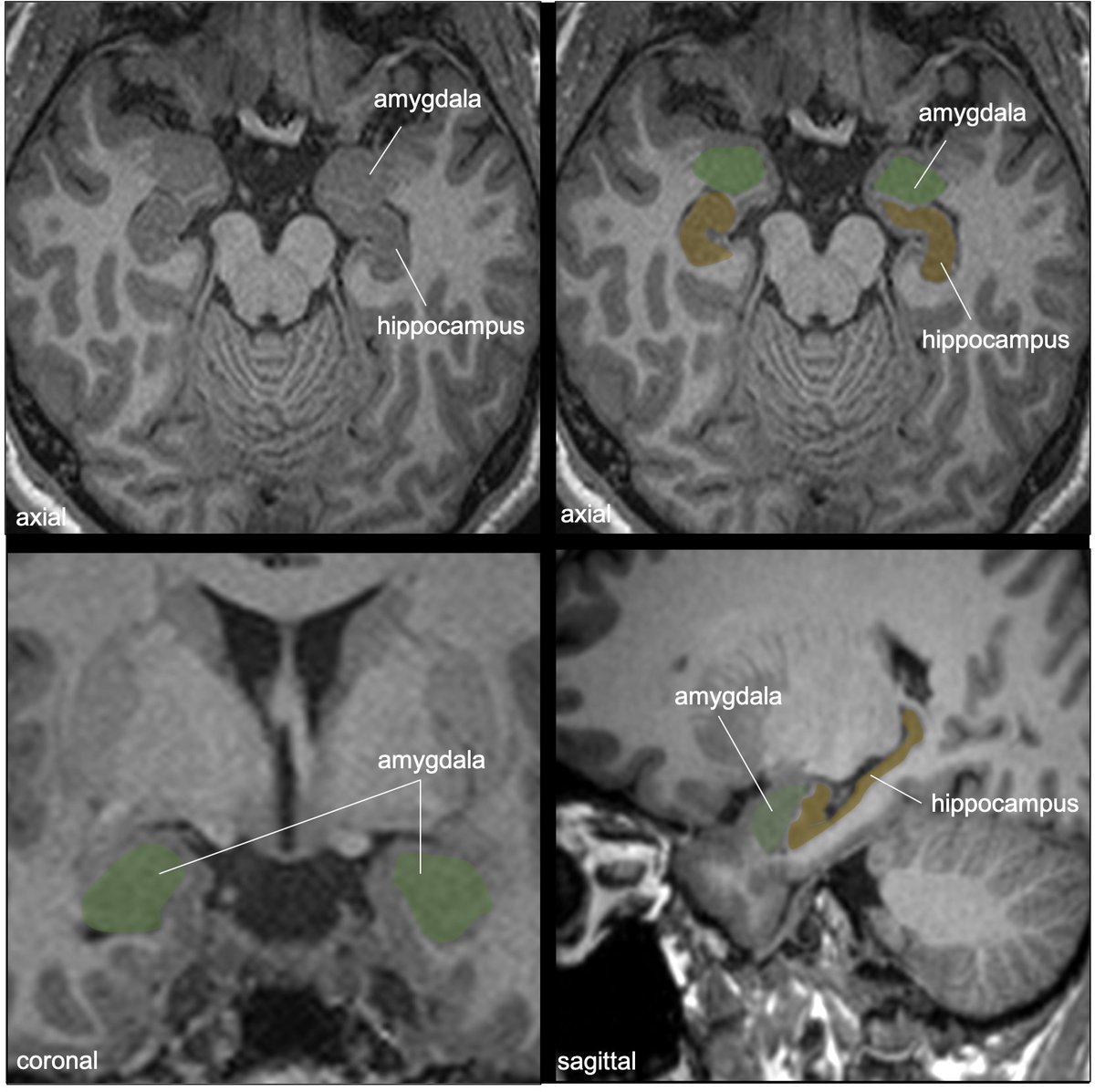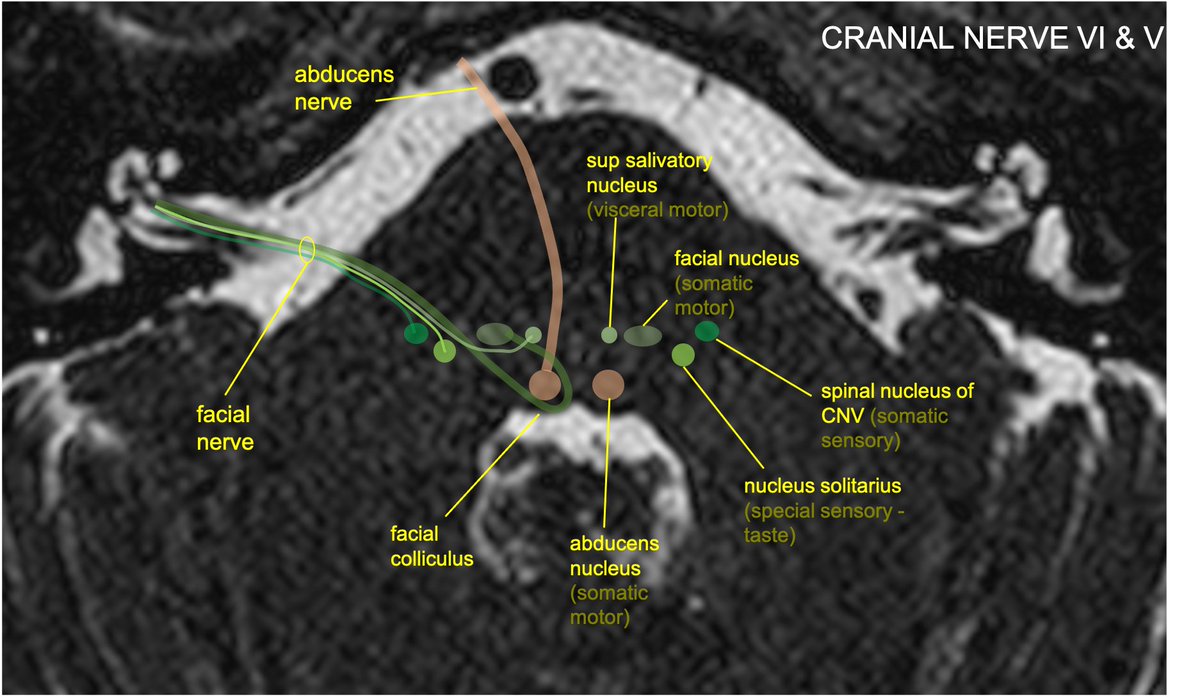Neuroanatomy TOTD #5
The indicated bundle is the anterior commissure (AC), located at the ant border of the 3rd ventricle, at the sup margin of the lamina terminalis.
#meded #FOAMed #FOAMrad #radres #neurorad #medtwitter #radiology #neurosurgery #neuroanatomy #neuroanatomyTOTD
The indicated bundle is the anterior commissure (AC), located at the ant border of the 3rd ventricle, at the sup margin of the lamina terminalis.
#meded #FOAMed #FOAMrad #radres #neurorad #medtwitter #radiology #neurosurgery #neuroanatomy #neuroanatomyTOTD

The AC runs across the midline in front of the anterior columns of the fornix, behind the basal forebrain and beneath the anterior limb internal capsule and basal ganglia, surrounded by the bed nucleus of the stria terminalis.
The AC connects areas of the bilateral temporal poles and orbitofrontal cortex. Function is not entirely understood but it is thought to be important in the olfactory pathway and pain sensation, among other things.
Other supratentorial crossing bundles: the corpus callosum, posterior commissure, the hippocampal and habenular commissures. Note: a commissure is a bundle connecting similar regions on both sides; projection fibers and decussations connect different regions at different levels. 

The posterior commissure is part of the epithalamus, anterior/inferior to the pineal gland. Important in pupillary light reflex. In MR imaging, a true axial is usually considered as the plane connecting the AC and posterior commissure. 

The habenular commissure connects the habenular nuclei of the epithalamus and forms the stalk of the pineal gland. The hippocampal commissure connects the two sides of the body/crus of the fornix. 

• • •
Missing some Tweet in this thread? You can try to
force a refresh


